
The history of painting reaches back in time to artifacts and artwork created by pre-historic artists, and spans all cultures. It represents a continuous, though periodically disrupted, tradition from Antiquity. Across cultures, continents, and millennia, the history of painting consists of an ongoing river of creativity that continues into the 21st century. Until the early 20th century it relied primarily on representational, religious and classical motifs, after which time more purely abstract and conceptual approaches gained favor.
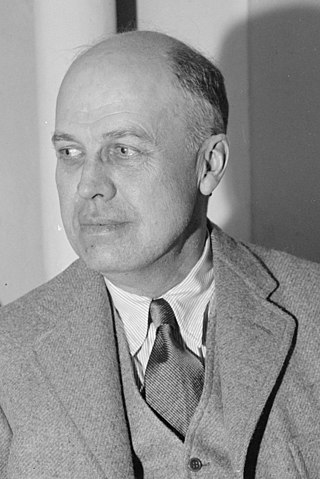
Edward Hopper was an American realist painter and printmaker. He is one of America's most renowned artists and known for his skill in capturing American life and landscapes through his art.
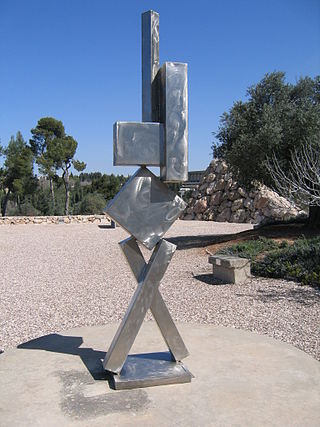
Abstract expressionism in the United States emerged as a distinct art movement in the immediate aftermath of World War II and gained mainstream acceptance in the 1950s, a shift from the American social realism of the 1930s influenced by the Great Depression and Mexican muralists. The term was first applied to American art in 1946 by the art critic Robert Coates. Key figures in the New York School, which was the epicenter of this movement, included such artists as Arshile Gorky, Jackson Pollock, Franz Kline, Mark Rothko, Norman Lewis, Willem de Kooning, Adolph Gottlieb, Clyfford Still, Robert Motherwell and Theodoros Stamos among others.

Modern art includes artistic work produced during the period extending roughly from the 1860s to the 1970s, and denotes the styles and philosophies of the art produced during that era. The term is usually associated with art in which the traditions of the past have been thrown aside in a spirit of experimentation. Modern artists experimented with new ways of seeing and with fresh ideas about the nature of materials and functions of art. A tendency away from the narrative, which was characteristic of the traditional arts, toward abstraction is characteristic of much modern art. More recent artistic production is often called contemporary art or postmodern art.

Visual art of the United States or American art is visual art made in the United States or by U.S. artists. Before colonization, there were many flourishing traditions of Native American art, and where the Spanish colonized Spanish Colonial architecture and the accompanying styles in other media were quickly in place. Early colonial art on the East Coast initially relied on artists from Europe, with John White the earliest example. In the late 18th and early 19th centuries, artists primarily painted portraits, and some landscapes in a style based mainly on English painting. Furniture-makers imitating English styles and similar craftsmen were also established in the major cities, but in the English colonies, locally made pottery remained resolutely utilitarian until the 19th century, with fancy products imported.

The Ashcan School, also called the Ash Can School, was an artistic movement in the United States during the late 19th-early 20th century that produced works portraying scenes of daily life in New York, often in the city's poorer neighborhoods.
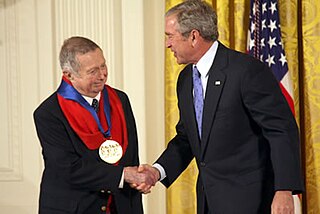
George Clair Tooker, Jr. was an American figurative painter. His works are associated with Magic realism, Social realism, Photorealism, and Surrealism. His subjects are depicted naturally as in a photograph, but the images use flat tones, an ambiguous perspective, and alarming juxtapositions to suggest an imagined or dreamed reality. He did not agree with the association of his work with Magic realism or Surrealism, as he said, "I am after painting reality impressed on the mind so hard that it returns as a dream, but I am not after painting dreams as such, or fantasy." In 1968, he was elected to the National Academy of Design and was a member of the American Academy of Arts and Letters. Tooker was one of nine recipients of the National Medal of Arts in 2007.

Lowbrow, or lowbrow art, is an underground visual art movement that arose in the Los Angeles, California area in the late 1960s. It is a populist art movement with its cultural roots in underground comix, punk music, tiki culture, graffiti, and hot-rod cultures of the street. It is also often known by the name pop surrealism. Lowbrow art often has a sense of humor – sometimes the humor is gleeful, impish, or a sarcastic comment.
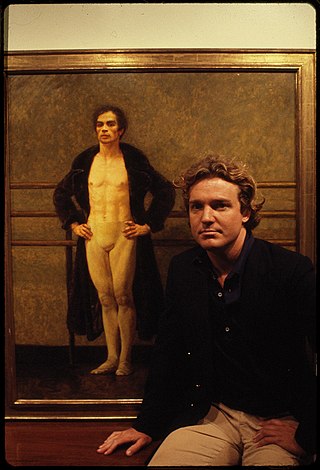
James Browning Wyeth is an American realist painter, son of Andrew Wyeth, and grandson of N.C. Wyeth. He was raised in Chadds Ford Township, Pennsylvania, and is artistic heir to the Brandywine School tradition — painters who worked in the rural Brandywine River area of Delaware and Pennsylvania, portraying its people, animals, and landscape.

Jacques Monory was a French painter and filmmaker whose work, highly influenced by photography and cinema, is an allegory of the contemporary world with a focus on the violence of everyday reality. His canvases evoke a heavy atmosphere, pulling subject matter from modern civilization through the lens of his signature monochrome color blue.
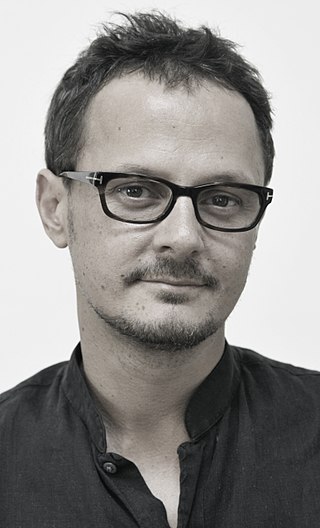
Jonathan Yeo is a British artist who rose to international prominence in his early 20s as a contemporary portraitist, having painted Kevin Spacey, Dennis Hopper, Cara Delevingne, Damien Hirst, Prince Philip, Erin O'Connor, Tony Blair, and David Cameron among others. GQ has called him 'one of the world's most in-demand portraitists'. He was educated at Westminster School.
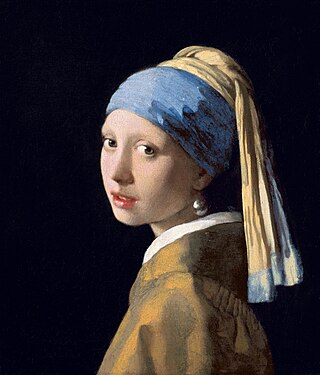
The history of Western painting represents a continuous, though disrupted, tradition from antiquity until the present time. Until the mid-19th century it was primarily concerned with representational and Classical modes of production, after which time more modern, abstract and conceptual forms gained favor.
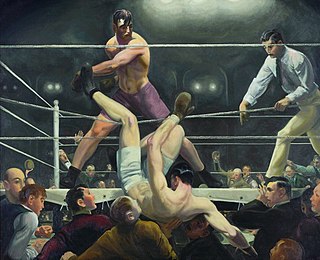
American Realism was a style in art, music and literature that depicted contemporary social realities and the lives and everyday activities of ordinary people. The movement began in literature in the mid-19th century, and became an important tendency in visual art in the early 20th century. Whether a cultural portrayal or a scenic view of downtown New York City, American realist works attempted to define what was real.
The following outline is provided as an overview of and topical guide to the history of painting:

20th-century Western painting begins with the heritage of late-19th-century painters Vincent van Gogh, Paul Cézanne, Paul Gauguin, Georges Seurat, Henri de Toulouse-Lautrec, and others who were essential for the development of modern art. At the beginning of the 20th century, Henri Matisse and several other young artists including the pre-cubist Georges Braque, André Derain, Raoul Dufy and Maurice de Vlaminck, revolutionized the Paris art world with "wild", multi-colored, expressive landscapes and figure paintings that the critics called Fauvism. Matisse's second version of The Dance signified a key point in his career and in the development of modern painting. It reflected Matisse's incipient fascination with primitive art: the intense warm color of the figures against the cool blue-green background and the rhythmical succession of the dancing nudes convey the feelings of emotional liberation and hedonism.

James Clifford was an Australian painter who borrowed styles from other artists, in the manner of psychedelic rock music artists who came after the major pop artists and were forerunners of the postmodern appropriation movement of the 1980s.
John Baeder is an American painter closely associated with the photorealist movement. He is best known for his detailed paintings of American roadside diners and eateries.
R. Kenton Nelson is an American painter and contemporary artist from California.

Erin Rae is an American folk pop band from Nashville, Tennessee.
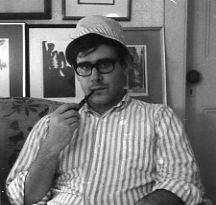
Carroll Nathaniel Jones III was an artist in the style of American realism. Carroll grew up in New Providence, New Jersey, where his father, an illustrator for Life (magazine), was his first art teacher. He taught Carroll techniques of the Old Masters, who emphasized light, perspective, and composition. Carroll went to school in New York City (NYC) and enrolled in the Phoenix School of Design at age 17. He later attended Hartford Art School and became a commissioned portraitist for 10 years. After his work, Church Window was recognized in the New York Times, he moved away from portraits to recreate scenes that sparked memories of his childhood. Andrew Wyeth and Edward Hopper most influenced Jones. The Coe-Kerr Gallery of NYC and Whistler's Daughter Gallery of New Jersey represented Jones and contemporaries, Wyeth and Hopper. Malcolm Forbes, Frederick R. Koch, Stephen Sondheim, William Schuman, and Jean Shepherd held private collections. He exhibited at Newark Museum and Trenton Art Museum in New Jersey, and in universities, galleries and museums in seven states by his mid-thirties. His work is part of the permanent collections of Seton Hall University and Newark Museum. Art critic Marion Filler considered his work Magic realism, a quiet movement made famous in America beginning in the 1920s by Hopper, and related to Surrealism.


















